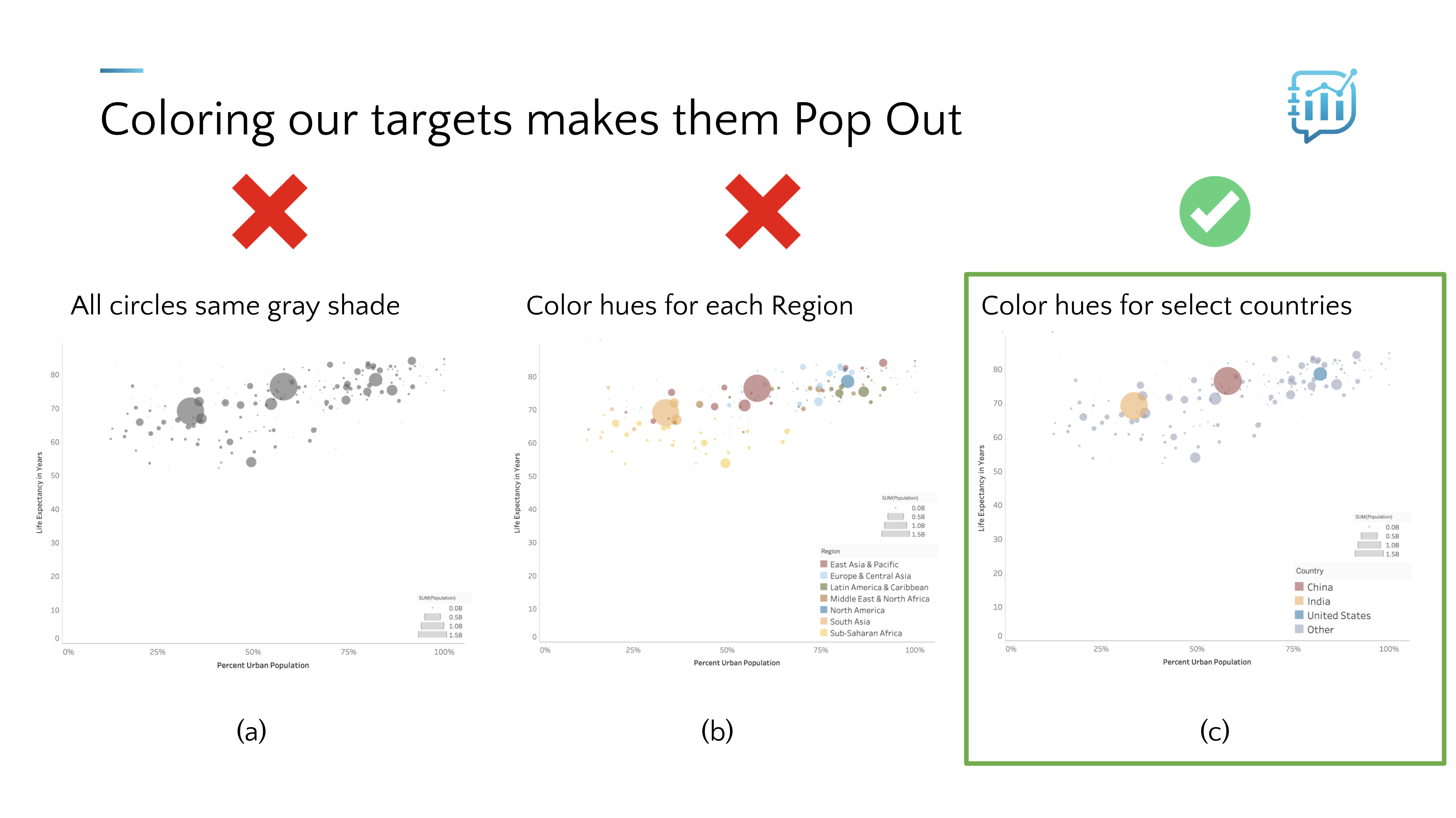1.6 The Pop Out Effect
Topic Summary
In our final topic of lesson 1, we’ll take into consideration another important aspect of human perception to consider when analyzing how our minds interact with visual encodings of data. Certain aspects of visuals tend to grab our attention. When this happens immediately and automatically, it’s called “pop out”. Depending on how a chart is designed, our attention might be drawn toward or away from important aspects in the view that are relevant to a question we need to answer or a task we need to perform. We’ll gain an understanding of the “pop out” effect, which can lead to “preattentive processing”, and understand why these concepts are significant when analyzing charts and encodings.
Key Points to Remember
- “Pop out” happens when something in the view called a “target” that’s defined by a unique visual property causes it to be easily detected by a viewer – the chart reader in our case.
- Preattentive processing happens whenever we notice certain kinds of visual properties within large multi-element displays very rapidly and accurately. The tasks involved with preattentive processing can typically be performed in less than 200 to 250 milliseconds.
- Depending on the questions we need to answer or the tasks we need to accomplish, a chart might help us see what we need to see, or it might make those same elements difficult to notice or find.
- We’re seeking to combine sender, signal and receiver in a harmonious way, so that the message that’s received is both expressive and effective.
Definitions
- “pop out” effect – an element of feature search that characterizes the target’s ability to stand out from surrounding distractors due to its unique feature. (source: Wikipedia)
- preattentive processing – is the subconscious accumulation of information from the environment. (source: Wikipedia)
Diagrams

Find the red circles inside each of the three boxes

Using the pop out effect to identify three specific countries – China, India, and the United States
Quotes
“Typically, tasks that can be performed on large multielement displays in less than 200-250 milliseconds (msec) are considered preattentive.”
Christopher G. Healey and James T. Enns
Further Learning
- Research paper: “Attention and Visual Memory in Visualization and Computer Graphics” by Christopher G. Healy and James T. Enns (July 2012)
- YouTube video: “Playfair Data Presents: Preattentive Attributes“